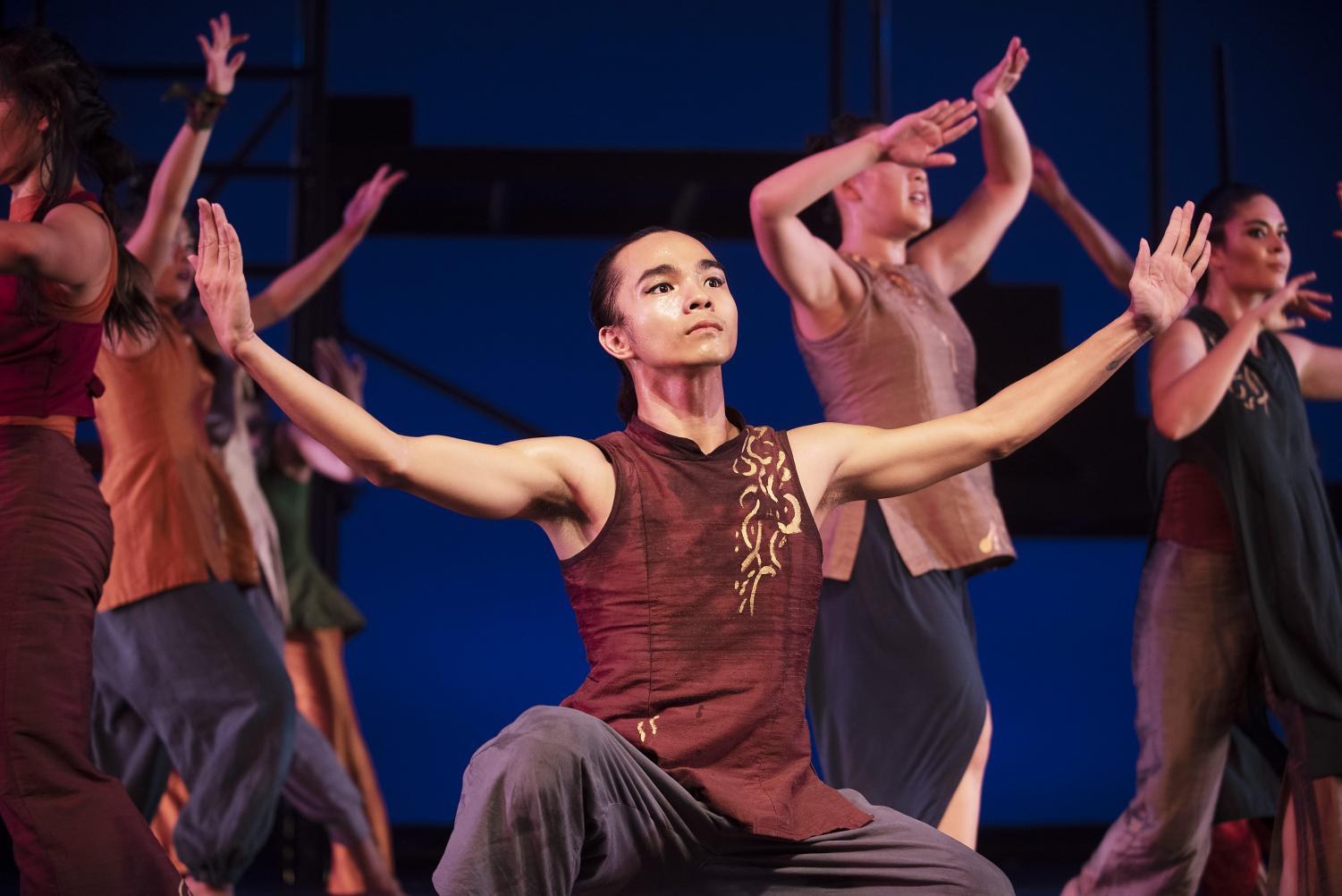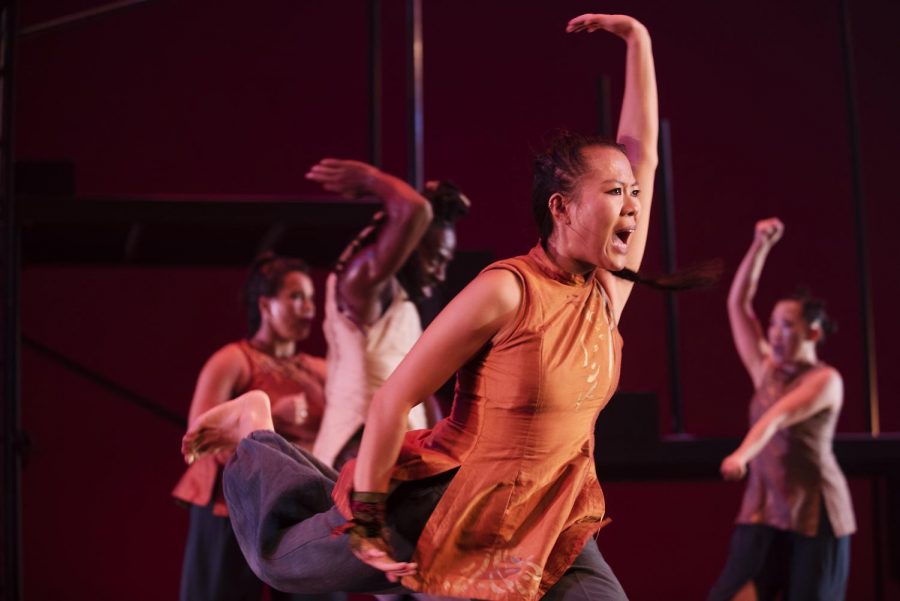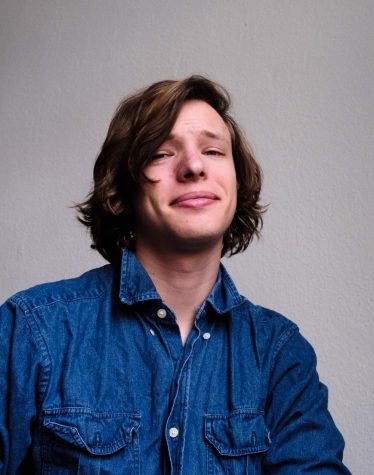Ananya Dance Theatre performing decolonized contemporary dance
October 3, 2019
Ananya Chatterjea has been dancing Odissi, a classical Indian dance form, for almost her entire life. Now she runs her own dance company, Ananya Dance Theatre (ADT), which practices a new form of contemporary Indian dance based on Odissi.
“[Chatterjea] came to the United States for her doctorate degree at Columbia University and was really disappointed and frustrated with how westernized dance teaching and dance philosophy are in the United States,” Toan Thanh Doan ’19, an ADT dancer. said. “She’s interested in making a new contemporary notion of dance. However, even the word contemporary itself has been co-opted by western dance, by white dance.”
Contradicting the idea that Indian dance or other non-western dance forms are “cultural” forms rather than just another type of dance like ballet or contemporary, Chatterjea has spent over 10 years developing the new dance form “Yorcha.” This dance form contains elements of classical Odissi, vinyasa yoga, the eastern Indian martial art form Chhau and new movements which bring these forms into a modern, activist setting.
“We are culturally specific but we also are not put into the box of ‘Indian’ dance or ‘cultural’ dance, we are ‘contemporary’ dance,” Doan said.
Their latest dance performance, “Sutrejāl” captured Yorcha’s specificity, urgency and relevancy to the current political moment when it was performed at the O’Shaughnessy Auditorium at St. Catherine’s University on Sept 20 and 21. Set in the surreal and history-laden “Broken City,” the dance performance is a mythologised fantasy realm with deep ties to the histories of real communities.
“One thing that we frequently say is that in ADT, our work is partly researched, partly remembered and partly imagined,” Julia Gay ’16, another dancer in ADT, said. “And so in that I think ‘Sutrejāl’ is really all those things.”
Recognizing their commitment to engagement with real world communities, the show began with a “land celebration” in place of a land acknowledgement. Instead of simply recognizing that the performance is on Dakota land, ADT worked with Janice Bad Moccasin, a tribal member of the Dakota nation, to provide a blessing of the space.
“In classical Indian dance, there’s a practice called Parnam which is thanking the earth and thanking the land that we dance on,” Gay said. “And so we worked with Janice to create a practice that acknowledged the land but also that this is Dakota land.”
This outreach embodies ADT’s commitment to building substantive relationships as a part of their art and also their attention to the stories that the dance pulls its history from.
The performance began with a number of brief vignettes, as the dancers created short stories about life in the setting of “the Broken City.” Although these short snippets may seem abstract, they contain characters which ADT has put a large amount of work into constructing. ADT has extensive conversations about the kind of stories they want to portray.
The world of “Sutrejāl” is filled with personal moments of desire, conflict, work and oftentimes love. Doan has one such love duet with a black male dancer, and the stories that they try to tell with this interaction go far beyond the world of the dance.
“We talked about how in the Vietnam War there were a lot of black folks who were sent to the forefront of the Vietnam War to fight,” Doan said. “We thought about the potential for different queer encounters that happen during that time that never get talked about. And also what the embodiment of softness means on a black male body and what does that body of softness mean on an asian male body? What we are trying to tell through the kind of desire and unapologetic desire of love [is important] for queer communities, especially queer communities of color all around the world.”
Even if these stories can’t be told directly through movement, they express ADT’s diligent outreach to communities of color across the world. Although many of these narratives are drawn from the past, Sutrejāl has a complicated relationship with time and has characters who move through it non-linearly. Throughout the dance, the world of the Broken City is framed by spoken word pieces performed by a character referred to as “The Poet,” who is portrayed by Tish Jones. Her monologues reveal that her character is a sort of historian, trying to uncover the untold stories of “the Broken City.” This role is also aided by a character named Ahiwa, played by Alessandra Williams ’07 . She is a seer who traverses time and space to preserve the stories of spirits in “the Broken City.”
“[Tish and Williams’ characters] provide a narrative arc that I think is so interesting because again, it is both in the past and always tracing these stories that are often untold,” Doan said. “But also their characters are very futuristic in a sense. I personally imagine them as people 200 years from now, maybe even post human extinction, post climate change and everything, digging up these stories and trying to tell these stories and also imagine a future that we don’t yet know how it looks like.”
Although “the Broken City” is a fantastical place in many different times and spaces at once, it is also representative of real world communities of color.
“The very close example of ‘the Broken City’ that we think about is the Rondo community,” Doan said
Rondo was a thriving African American neighborhood in Saint Paul during the 20th century. Much of the neighborhood was demolished for the construction of the I-94 freeway in the late 1950s and 1960s.
ADT’s studio, the Shawngram Institute for Performance & Social Justice, is in close proximity to Rondo, an intentional decision that further highlights ADTs commitment to relationship building in and outside of performance.

One of the most surprising and energetic moments of “Sutrejāl” involved audience participation. During an energetic and inspiring sequence, the entire front row of the audience jumped onto the stage and started dancing alongside the performance. Even though other members of the audience joined in during the spur of the moment, the front row dancers involvement was part of a much longer collaboration.
“We work to incorporate audience participation in creative ways that isn’t just surface level, but is really about relationship building,” Gay said. “And so the people who got up and danced with us in the middle of ‘Sutrejāl’ are people we’ve been building relationships with over the year, over many years.”
“I think Ananya is also very intentional as ‘dancing in the middle of life’, is the phrase that she usually refers to,” Doan said. “Even the institute, our dance studio, we call the Shangram Institute for Performance & Social Justice, so it’s not just a dance studio but also we want it to be a community center, a place where people hold different events and different ceremonies and gatherings and protests. And that location itself is very important for us because its near a lot of high schools that serve youth of color.”
Despite the fact that Sutrejāl was only performed for two nights, it is the embodiment of a project of decolonization in art and community that ADT works on year round. The numerous stories of silenced communities are at the core of the kind of political art the company is making. Those stories can not be easily summarized, and instead become a part of a complex tapestry of movement, history, politics and community called Sutrejāl.
“We don’t dance just to dance,” Doan said. “We don’t dance to see how fast our bodies can move, or how far we can jump or how high of a split we can do.
“We dance because we are invested in activism, we dance because dance is a kind of culture activism and we see the importance of embodiment, especially for people whose bodily liberation is constantly denied.”














